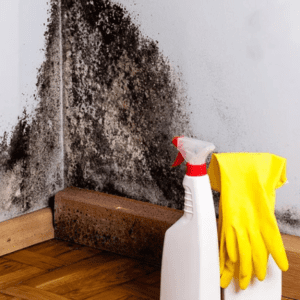Essential Steps After Mold Remediation
Wiki Article
Your Ultimate Overview to Post Mold Remediation Strategies
Navigating the realm of post-mold removal methods is a careful procedure that demands interest to detail and a comprehensive understanding of the ins and outs involved. In the aftermath of mold invasion, understanding exactly how to properly eradicate the mold and mildew and stop its reoccurrence is extremely important for maintaining a healthy and balanced indoor environment. From picking the ideal cleansing and disinfecting approaches to executing approaches for lasting mold avoidance, each action in the remediation journey plays a crucial function in guaranteeing a successful end result. As we embark on this exploration of post-mold remediation methods, we will certainly uncover the essential strategies and ideal methods that can help you recover your room to its pre-mold condition and secure it versus future mold and mildew risks.Understanding Post-Mold Remediation Process
After completing the mold removal process, it is important to understand the post-mold remediation methods that are essential to make sure a effective and comprehensive clean-up. Once the mold and mildew has been removed, the following step involves cleaning and sanitizing the impacted locations to prevent any type of regrowth of mold.
Moreover, conducting a final evaluation post-remediation is essential to ensure that all mold and mildew has actually been effectively removed. This inspection ought to include a thorough aesthetic check as well as possibly air sampling to validate the absence of mold spores airborne. Additional remediation might be needed if the examination discloses any type of sticking around mold. Lastly, enlightening passengers on preventative steps such as controlling dampness levels and without delay dealing with any type of water leaks can aid keep a mold-free environment.
Efficient Cleansing and Decontaminating Approaches

Stopping Future Mold Development

Relevance of Appropriate Ventilation
Correct ventilation plays an essential duty in protecting against dampness buildup, a crucial aspect in mold and mildew development within indoor settings. Efficient ventilation systems aid get rid of excess moisture from the air, lowering the chances of mold and mildew spores finding the wetness they require to germinate and spread. Without appropriate air flow, indoor rooms can come to be a reproduction ground for mold, resulting in prospective health dangers and structural damage.By ensuring correct air circulation, ventilation systems can additionally aid in drying damp areas extra promptly after water damage or flooding events, further hindering mold and Post Mold Remediation Report mildew growth. Post Mold remediation cleaning. In areas like bathrooms, kitchens, basements, and attic rooms where dampness levels often tend to be greater, setting up and preserving effective air flow systems is vital in stopping mold problems

Monitoring and Upkeep Tips
Provided the crucial duty that appropriate ventilation plays in stopping mold and mildew development, it is imperative to develop effective monitoring and maintenance tips to guarantee the ongoing capability of air flow systems. Tracking humidity degrees within the residential property is additionally critical, as high humidity can add to mold development. By staying attentive and positive to the problem of ventilation systems, residential or commercial property proprietors can efficiently mitigate the danger of mold regrowth and maintain a healthy and balanced indoor setting.
Final Thought
In conclusion, post-mold removal techniques are necessary for ensuring a secure and tidy atmosphere. Recognizing the process, carrying out effective cleansing and sanitizing methods, avoiding future mold and mildew growth, keeping appropriate ventilation, and normal tracking are all crucial steps in the removal procedure. By adhering to these standards, you can efficiently get rid of mold and mildew and avoid its return, functioning or advertising a healthy and balanced living room for all owners.In the after-effects of mold and mildew infestation, knowing exactly how to successfully remove the mold and mildew and avoid its reoccurrence is paramount for preserving a healthy and balanced interior setting. As soon as the mold has been gotten rid of, the following action includes cleansing and decontaminating the impacted areas to protect against any type of regrowth of mold and mildew - testing air quality after mold remediation. After removing noticeable mold development, it is vital to clean all surfaces in the affected area to remove any continuing to be mold spores. To further improve mold prevention actions, it is vital to resolve underlying problems that at first led to mold and mildew development.Provided the vital role that correct air flow plays in avoiding mold and mildew growth, it is critical to establish effective surveillance and maintenance suggestions to make sure the ongoing performance of air flow systems
Report this wiki page